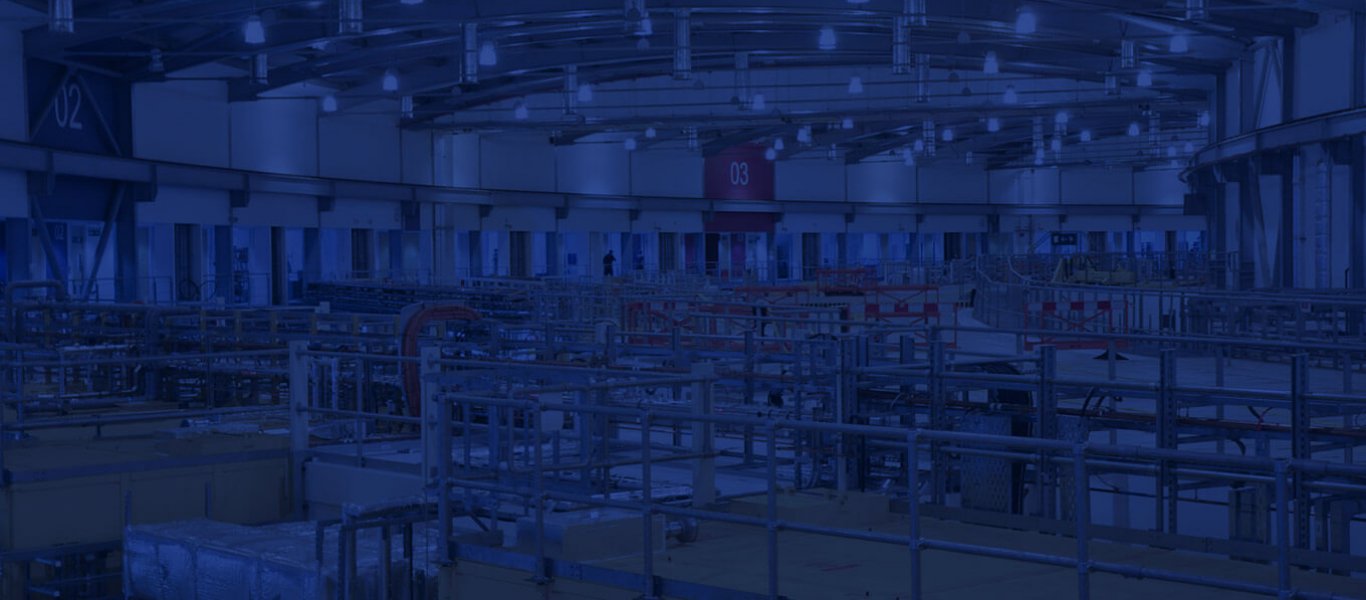Synchrotron Diffraction
The Synchrotron Diffraction or High Energy X-ray Diffraction (HEXRD) technique carries out residual stress measurements using the same principle as standard X-ray Diffraction.
High energy x-rays penetrating a component are diffracted by the crystallographic planes within its material grains according to Bragg’s law. This technique exploits the polycrystalline lattice of the material as an atomic strain gauge. The technique relies on accurate measurement of the change in separation of atomic lattice planes in polycrystalline materials due to stress. Synchrotron X-rays are very well defined geometrically and beam sizes of μm levels can be routinely achieved.

Schematic of an incident and diffracted HEXRD beam with corresponding diamond shaped gauge volume.
The high energy x-rays are generated within a synchrotron ring and hence the technique is not portable. There are many such synchrotron facilities around the world and access for beam time is either bought (1 - 6 months lead time) or granted freely by successful application to an academic peer review process (6 – 12 months lead time) on the condition that the results will be published.

Diamond, the UK’s new Synchrotron facility near Oxford.
Synchrotrons provide very intense beams of high energy x-rays, a million times more intense than laboratory based x-rays systems and therefore have a much higher depth of penetration (e.g. 20mm in steel and 100mm in aluminium). Synchrotron Diffraction is therefore capable of providing high spatial resolution, 3D maps of the strain distribution to millimetre depths in engineered components.
When measuring to millimetre depths however the d0 stress-free lattice spacing needs to be determined. Hence a stress-free sample is usually extracted from the component at the measurement location. For measurements near the component surface a differential technique can be used so that a stress-free sample is not needed.
The relatively high energy beams result in low 2θ scattering angles, typically ranging from 4° to 10°, which create elongated, diamond shaped gauge volumes. Therefore although HEXRD gauge volumes are considered small the orientation of measurement is important in order to optimise spatial resolution. Because of the coupling of penetration depth and elongation of gauge volume, Synchrotron Diffraction is best suited to light alloys and plate like geometries.

Comparison of residual stresses in an aluminium punched plate.
Uni-axial (and sometimes bi-axial) residual stresses are measured routinely by the HEXRD tech-nique. However due to its good penetration depths tri-axial (i.e. σxx, σyy and σzz) residual stresses can be measured by rotating the component for a second and third set of measurements to be taken. The surface finish of the component is less critical to HEXRD than XRD and again stresses can be measured to a nominal accuracy of ±30MPa in steel, however it also suffers from grain size and texture issues.
Advantages of the Synchrotron Diffraction Technique:
- “Non-destructive” technique (although d0 samples may need to be extracted or beam ac-cess windows cut);
- Good penetration depths – 20mm in steel, 100mm in aluminium (total beam path lengths);
- Tri-axial residual stress measurements by specimen manipulation;
- Small gauge volume (typically <1mm3) and so great for measuring stress gradients;
- High magnitude residual stresses are measured accurately;
- Complex shapes can be measured, although beam access windows may need to be cut;
- Indifferent to surface finish;
- Nominal accuracy: 10MPa – Aluminium, 30MPa – Steel, 15MPa – Titanium;
- Fast measurement process;
- Macro and micro stresses measured.
Disadvantages of the Synchrotron Diffraction Technique:
- Laboratory based measurements with specimen size and weight restrictions;
- Only applicable to polycrystalline materials;
- Accuracy affected by grain size and texture;
- Very long lead times before measurement unless beam time paid for commercially;
- Elongated gauge volume.
References & Further Reading:
- Noyan, I.C., and Cohen, J.B., “Residual Stress, Measurement by Diffraction and Interpreta-tion”, Springer-Verlag, New York Inc., 1987.
- Steuwer, A., Santisteban, J.R., Turski, M., Withers, P.J., Buslaps, T., “High-resolution strain mapping in bulk samples using full-profile analysis of energy dispersive synchrotron X-ray diffraction data”, Nuclear Instruments and Methods in Physics Research, B 238, 200-204, 2005.
- Steuwer, A., Santisteban, J.R., Turski, M., Withers, P.J., Buslaps, T., “High-resolution strain mapping in bulk samples using full-profile analysis of energy dispersive synchrotron X-ray diffraction data”, J. Appl. Cryst., 37 (6), 883-889, 2004.


